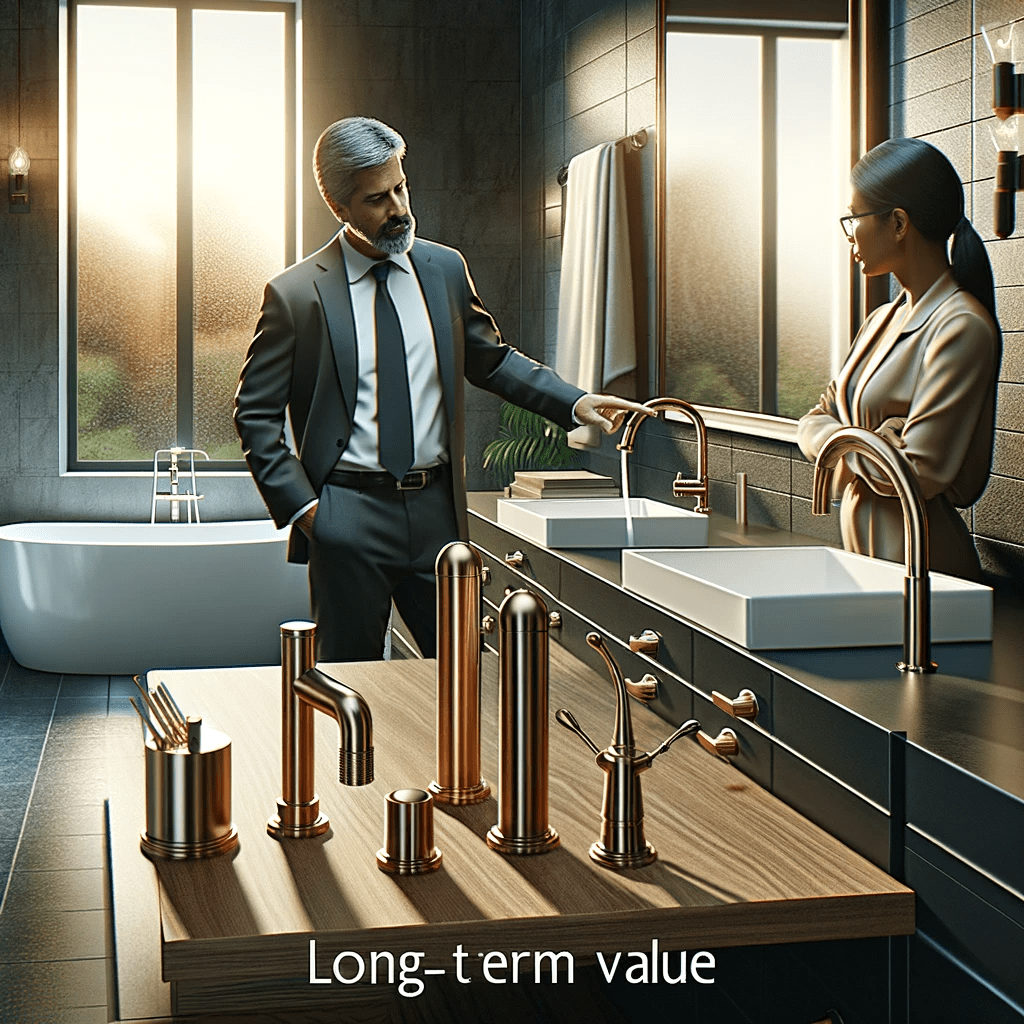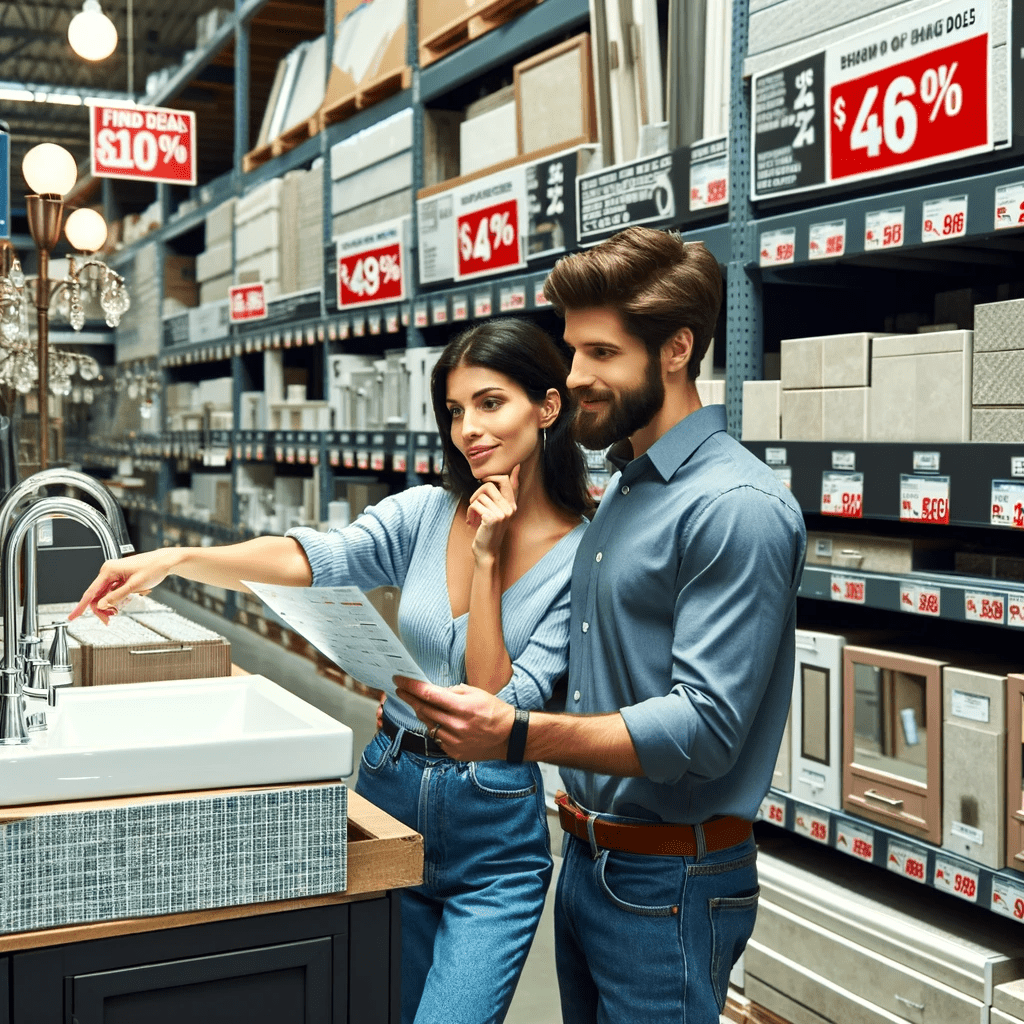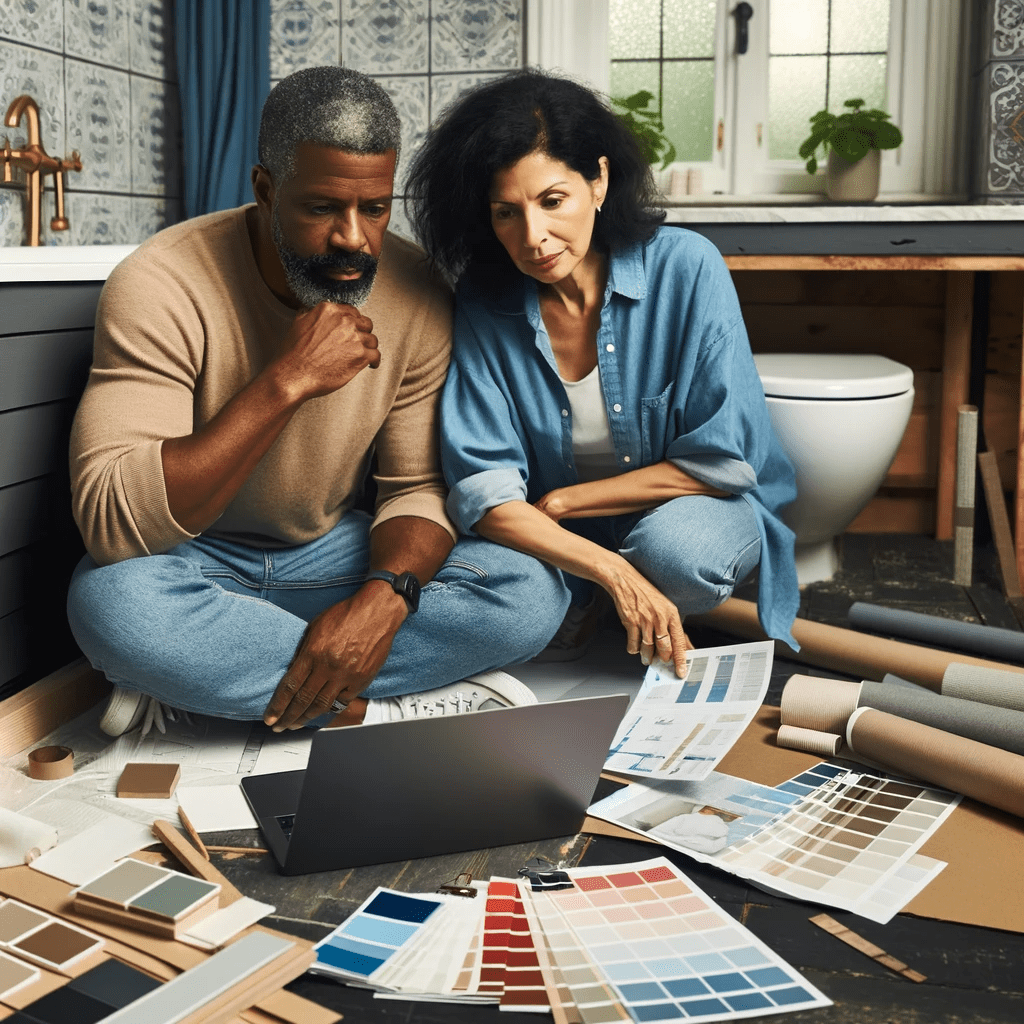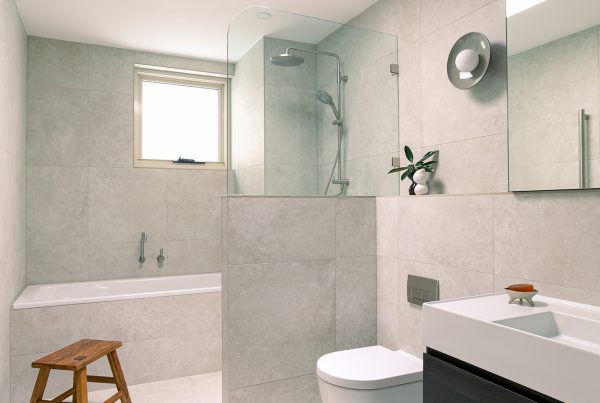A bathroom remodel can be a costly endeavor, and it’s easy to overspend if you don’t have a clear plan in place. Prioritizing your spending during a bathroom remodel can help you stay within your budget and achieve the results you want. Here are some tips on how to prioritize your spending during a bathroom remodel.
Determine Your Must-Haves
Before you start your bathroom remodel, determine your must-haves. These are the items that are essential to the function and design of your bathroom. For example, a new toilet or showerhead may be a must-have, while a heated towel rack may be a nice-to-have. By prioritizing your must-haves, you can allocate your budget accordingly.
Here’s a table to guide you through some common must-have items, their estimated costs in Sydney, and why they might be essential:
| Must-Have Item | Estimated Cost (AUD) | Importance Note |
|---|---|---|
| New Toilet | $250 – $800 | Essential for hygiene and daily use. |
| Quality Showerhead | $100 – $500 | Important for water efficiency and comfort. |
| Waterproofing | $500 – $2,000 | Crucial for preventing moisture damage. |
| Adequate Lighting | $150 – $1,000 | Ensures safety and enhances the bathroom’s ambiance. |
| Ventilation System | $200 – $800 | Essential for preventing mold and maintaining air quality. |
| Basic Tiling | $30 – $100 per sqm | Necessary for durability and ease of cleaning. |
| Storage Solutions | $200 – $1,500 | Important for organization and space management. |
Note: Prices vary based on the quality, brand, and specific product features.
Nice-to-Have Features
Once you’ve allocated funds for the essential items in your bathroom remodel, you can consider investing in nice-to-have features. These elements can add comfort, luxury, and aesthetic appeal to your bathroom. Here’s a breakdown of some popular nice-to-have features, their estimated costs in Sydney, and reasons why you might consider them:
| Nice-to-Have Feature | Estimated Cost (AUD) | Justification for Consideration |
|---|---|---|
| Heated Towel Rack | $150 – $700 | Adds comfort and luxury; great for cold mornings. |
| Luxury Faucets | $200 – $1,000 | Enhances the bathroom’s visual appeal and user experience. |
| Freestanding Bathtub | $1,000 – $5,000 | Acts as a centerpiece; offers a luxurious bathing experience. |
| Designer Tiles | $50 – $200 per sqm | Adds unique style and character to your space. |
| Smart Shower System | $500 – $3,000 | Offers customizable shower experiences and can be energy-efficient. |
| Underfloor Heating | $500 – $2,500 | Provides warmth and comfort, particularly in colder months. |
| Custom Cabinetry | $1,000 – $4,000 | Tailored storage solutions to fit specific needs and tastes. |
| High-End Lighting | $300 – $1,500 | Enhances ambiance and can be a design statement. |
Note: Prices vary based on the quality, brand, and specific product features.
These nice-to-have features, while not essential, can significantly elevate the experience and value of your bathroom. If your budget allows, consider which of these elements align with your personal preferences and the overall vision for your remodel.
By focusing on these must-have items first, you ensure that your budget is spent on elements that will significantly impact the functionality and overall satisfaction with your bathroom remodel. Once these essentials are covered, you can then consider allocating funds to additional features, like a heated towel rack or luxury finishes, if your budget permits.
Consider Long-Term Value
In any bathroom remodel, understanding and prioritizing long-term value over initial costs can significantly impact the overall success and sustainability of the project. While budget constraints are a reality for many homeowners, investing wisely in high-quality materials and fixtures can lead to greater satisfaction and lower expenses over time. It’s important to assess the lifespan, durability, and maintenance needs of each element you choose, from the flooring and tiles to the faucets and lighting fixtures.
Quality vs. Immediate Cost:
- High-Quality Fixtures: Investing in well-made fixtures like toilets, sinks, and faucets can prevent frequent repairs or replacements. Look for items with solid warranties and good reputations for longevity. For example, solid brass fixtures might have a higher upfront cost but tend to outlast their cheaper counterparts.
- Durable Materials: Choose materials that are known for their durability and resistance to wear and tear, especially in a high-moisture environment like a bathroom. Porcelain tiles, for instance, might be more expensive than some alternatives, but their resistance to chipping, staining, and water can make them a more cost-effective choice in the long run.
Maintenance and Efficiency Considerations:
- Low Maintenance Options: Materials and fixtures that are easy to clean and maintain can save time and money over the years. Non-porous surfaces, for example, won’t require regular sealing and are less likely to harbor mold or mildew.
- Energy and Water Efficiency: Eco-friendly fixtures such as low-flow toilets and LED lighting may have a higher initial cost but can lead to significant savings on utility bills. Look for ENERGY STAR-rated products or those with WaterSense certification to ensure efficiency and long-term savings.
Calculating Return on Investment (ROI):
- Resale Value: Certain renovations can increase the overall value of your home. Updated bathrooms with modern, high-quality fixtures are often appealing to potential buyers and can yield a higher return when selling your home.
- Cost vs. Benefit Analysis: Consider conducting a cost-benefit analysis for larger investments. Compare the upfront cost against the expected lifespan, maintenance savings, and potential energy or water savings to determine the overall value of the investment.
Consulting with Professionals:
- Contractors and Designers: A knowledgeable contractor or interior designer can provide valuable insights into the long-term value of different materials and fixtures. They can guide you towards investments that balance cost, quality, and style.
- Retailers and Suppliers: Discuss the longevity and performance of various products with suppliers or specialized retailers. They can often provide detailed information about the durability and expected lifespan of their offerings.
Considering the long-term value of each aspect of your bathroom remodel is essential in making informed decisions that balance cost, quality, and functionality. By investing wisely in durable, efficient, and low-maintenance materials and fixtures, you can create a bathroom that will remain beautiful, functional, and cost-effective for years to come. Remember, the cheapest option upfront may not always be the most economical in the long run, so take the tim
Focus on the Big-Ticket Items
In any bathroom remodel, efficiently allocating your budget begins with focusing on the big-ticket items. These are the elements that not only require the most significant portion of your spending but also have the greatest impact on both the functionality and aesthetics of the bathroom. Typically, these include the bathtub, shower, toilet, and vanity. Prioritizing these items ensures that you invest in quality where it counts the most, leading to a more satisfying and enduring renovation.
Identifying Big-Ticket Items:
- Bathtub: Whether you’re opting for a luxurious soaking tub or a practical combination shower/bathtub, choosing the right model is crucial. Look for tubs that offer the comfort, style, and size that fit your space and needs. Investing in a high-quality bathtub can enhance the entire feel of the bathroom.
- Shower: A well-designed shower can turn a daily routine into a rejuvenating experience. Consider spending on durable and easy-to-clean materials, efficient fixtures, and perhaps luxury features like body jets or a steam function if the budget allows.
- Toilet: As one of the most used fixtures in any home, selecting a reliable, efficient, and comfortable toilet is a wise investment. Modern toilets offer various features, from bidet functions to water-saving designs, that can significantly improve your bathroom’s functionality.
- Vanity: A good vanity combines storage, style, and durability. Investing in a sturdy build, quality materials, and a design that complements the overall look of your bathroom can make a big difference in its usability and appearance.
Investing in Quality and Longevity:
- Durability: Choose materials and products known for their durability and longevity. While they might cost more upfront, they tend to have longer lifespans and require fewer repairs or replacements, providing better value over time.
- Efficiency: Consider the efficiency of these items, especially for showers and toilets. Water-efficient models can lead to considerable savings on utility bills and are also better for the environment.
- Warranty and After-Sales Service: Look for products with solid warranties and good reviews regarding manufacturer support. This can provide peace of mind and protect your investment.
Balancing Cost with Impact:
- Function vs. Aesthetics: While aesthetics are important, functionality should be the primary concern for these big-ticket items. Ensure that they meet your daily needs and preferences before splurging on purely decorative features.
- Allocating Budget: Once you’ve selected the big-ticket items, allocate your budget accordingly. Be prepared to adjust other areas of your renovation to accommodate these essential investments.
Consulting with Professionals:
- Contractors and Designers: Before making any final decisions, consult with professionals who can provide insights into the best products and strategies for your specific bathroom and budget. They can help you navigate trade-offs and find the best deals on high-quality items.
- Comparative Shopping: Take the time to shop around and compare prices, reviews, and features. Retailers, showrooms, and online platforms can offer a range of options and sometimes discounts on quality products.
Evaluating Big-Ticket Items in Your Bathroom Remodel (Costs in AUD)
| Big-Ticket Item | Description | Estimated Cost Range (AUD) | Importance (High/Medium/Low) | Potential Savings Tips |
|---|---|---|---|---|
| Bathtub | Type, material, size, and features of bathtubs. | $700 – $5,500 | High | Look for end-of-season sales or slightly imperfect models. |
| Shower | Custom build vs. prefabricated units, size, and features like jets or steam. | $1,400 – $6,900 | High | Choose a prefabricated unit for savings, avoid unnecessary features. |
| Vanity | Material, size, and style of vanity and sink. | $400 – $4,100 | Medium | Purchase stock units over custom builds, consider refurbishing existing one. |
| Flooring | Type of tile, heated floors, area size. | $700 – $9,600 | High | Use less expensive tiles or limit high-end tiles to accent areas. |
| Plumbing | Pipes and plumbing fixtures quality and complexity. | $1,400 – $13,800 | High | Avoid moving plumbing if possible, use mid-range fixtures. |
Notes:
- Estimated Cost Range (AUD): Provides a ballpark figure for budgeting in Australian Dollars. Costs can vary widely based on location, material choices, and the complexity of the installation.
- Importance: Helps homeowners understand which items are typically the most critical in a bathroom remodel.
- Potential Savings Tips: Offers suggestions for how to save money on each big-ticket item without compromising the overall quality of the remodel.
Focusing on the big-ticket items in your bathroom remodel is about making informed, strategic decisions that will shape the quality, functionality, and overall appeal of your finished bathroom. By investing wisely in these key elements, you can create a space that not only looks beautiful but also stands up to daily use and enhances your home’s value. With careful planning and professional guidance, you can allocate your budget to ensure that these crucial components provide the best return on your investment and satisfaction for years to come.
Look for Bargains
Finding quality bargains can significantly reduce the overall cost of a bathroom remodel without compromising on style or functionality. While it’s important to invest in certain high-quality items, many other components of your bathroom can be sourced at a discount without sacrificing much in terms of longevity or aesthetics. By shopping smart and exploring various outlets for deals, you can stretch your budget further and possibly afford higher-end choices for your big-ticket items or additional features.
Strategies for Finding Bargains:
- Sales and Discounts: Regularly check home improvement stores, online retailers, and manufacturer websites for sales or clearance events. End-of-season sales, holiday promotions, and discontinued models can offer significant savings on quality items.
- Salvage Yards and Thrift Stores: These venues can be treasure troves for unique fixtures like sinks, mirrors, and bathtubs. Often, you can find high-quality items with lots of character at a fraction of the retail price. Just be sure to inspect any used items for damage or wear.
- Online Marketplaces: Websites like eBay, Craigslist, or Facebook Marketplace can be excellent sources for new or gently used fixtures and materials. Be vigilant about quality and authenticity, and always account for any shipping costs or time involved in picking up items.
Balancing Cost with Quality:
- Research and Compare: Before making a purchase, research the item to ensure it meets your standards for quality and functionality. Read reviews, compare prices, and check warranty information.
- Refurbishing and Repurposing: Sometimes, a little elbow grease can turn a second-hand find into a stunning feature for your bathroom. Consider whether you can refurbish or repurpose items to fit your needs and style.
- Quality Check: Especially for essential items, ensure that any bargains don’t come with hidden costs, like missing parts or the need for soon-to-come repairs. It’s okay to buy discounted items, but they should still be functional and durable.
Timing Your Purchases:
- Seasonal Shopping: Certain times of the year, like Black Friday or post-holiday clearance, can offer the best deals. Plan your renovation so you can purchase items during these discount periods.
- Patient Shopping: Sometimes waiting for the right sale or finding the perfect item at a salvage yard can take time. If your project timeline allows, be patient in your search for the best deals.
Consulting with Professionals:
- Contractors’ Discounts: Some contractors have partnerships with manufacturers or suppliers and can get materials at a discount. Discuss with your contractor if they can pass on any savings to you.
- Designers’ Insight: Interior designers might have insider knowledge about upcoming sales or outlets where you can find high-quality bargains. Their expertise can guide you to the best places to look for discounted items.
Looking for bargains is a smart strategy in any bathroom remodel, allowing you to allocate funds efficiently and perhaps even upgrade other aspects of your bathroom with the savings. By combining patience, diligent research, and a keen eye for quality, you can find discounted items that elevate your bathroom’s design without stretching your budget. Remember, the goal is to strike a balance between cost and quality, ensuring that your bathroom is both beautifully designed and financially attainable.
Avoid Unnecessary Add-Ons
Effective budgeting during a bathroom remodel involves distinguishing between must-have features and nice-to-have luxuries. While indulging in some upscale additions can enhance the enjoyment of your bathroom, it’s crucial to evaluate the long-term value and utility of each element. Unnecessary add-ons can quickly inflate the cost of your project without providing substantial improvements to the functionality or comfort of your bathroom. By focusing on essentials and making thoughtful decisions about extra features, you can ensure that your budget is spent wisely, enhancing the overall quality and efficiency of your bathroom.
Identifying Essential vs. Luxury Items:
- Functionality First: Focus on items that significantly impact the functionality and comfort of your bathroom, such as a quality shower system, adequate storage, or efficient lighting. These are investments that will improve your daily routine.
- Luxury Second: After covering the essentials, consider whether luxury items like a built-in sound system, heated floors, or a chandelier fit within your budget and will genuinely enhance your experience in the bathroom.
Evaluating Long-Term Value:
- Usage and Enjoyment: Consider how often you’ll use the add-on and whether it will enhance your enjoyment or convenience in the bathroom. Items that are seldom used or don’t significantly improve your experience might not be worth the investment.
- Resale Considerations: Think about whether the add-on will increase the appeal and value of your home to future buyers. Some high-end features might be attractive to certain buyers, while others could be seen as superfluous.
Cost vs. Benefit Analysis:
- Budget Impact: Assess the cost of each add-on and how it affects your overall budget. Could the money be better spent on improving more critical aspects of the bathroom?
- Alternative Solutions: Look for more cost-effective alternatives that can provide similar benefits. For instance, instead of a built-in sound system, a high-quality portable speaker might suffice.
Avoiding Impulse Decisions:
- Research and Reflect: Before committing to any add-ons, take the time to research alternatives and reflect on your actual needs and preferences. Avoid making impulse purchases that you might regret later.
- Consult with Professionals: Discuss the potential add-ons with your contractor or designer. They can provide insights into the cost and value of each feature and might suggest more practical or beneficial alternatives.
Discerning Unnecessary Add-Ons in Your Bathroom Remodel (Costs in AUD)
| Add-On Item | Description | Estimated Cost (AUD) | Impact on Project | Alternatives or Notes |
|---|---|---|---|---|
| Multiple Shower Heads | Additional shower heads for luxury showers. | $200 – $1,000 | Increases plumbing complexity and cost. | Consider a single efficient showerhead with good pressure. |
| Heated Towel Racks | Racks that warm towels for use. | $150 – $800 | Adds to electrical costs. | Use standard racks; invest in high-quality towels instead. |
| High-End Designer Tiles | Specialty or imported tiles. | $50 – $200 per sqm | Can significantly increase costs. | Opt for standard tiles in unique patterns or as accents. |
| Jetted Tub | Bathtub with water jets for massage effect. | $1,000 – $5,000 | Higher initial and maintenance costs. | Consider a deep soaker tub without jets as a relaxing alternative. |
| Smart Bathroom Features | Automated toilets, Bluetooth speakers, etc. | $500 – $4,000 | Increases technological complexity and potential repair costs. | Assess the true utility vs. novelty; stick to classic, durable fixtures. |
Notes:
- Estimated Cost (AUD): These are ballpark figures for the additional costs of each add-on item, expressed in Australian Dollars. Prices can vary based on brand, quality, and market.
- Impact on Project: Briefly describes how each add-on affects the overall bathroom remodel in terms of cost, complexity, and utility.
- Alternatives or Notes: Provides suggestions for avoiding these add-ons or considering more cost-effective alternatives without sacrificing comfort or style.
Avoiding unnecessary add-ons is about making strategic choices that align with your needs, preferences, and budget. While it’s tempting to include all the latest features and gadgets in your bathroom remodel, focusing on the essentials and carefully considering the value of each addition can lead to a more satisfying and financially responsible renovation. By prioritizing spending on items that improve functionality and comfort, you can create a bathroom that is both beautiful and practical, without unnecessary extravagance.
Be Realistic About Your Budget
A successful bathroom remodel requires a realistic and well-planned budget. Understanding and respecting your financial limits is crucial to ensure that the renovation improves your space without causing undue financial strain. Overspending on less impactful items can detract from the overall quality and functionality of the bathroom. By being prudent and focusing your spending on items that offer the most significant benefits, you can achieve a balance between creating your dream bathroom and maintaining financial responsibility.
Understanding and Setting Your Budget:
- Total Allocation: Determine the total amount you are willing to spend on the bathroom remodel. This includes all costs such as materials, labor, permits, and a contingency fund for unexpected expenses.
- Itemized Planning: Break down your budget into categories such as fixtures, finishes, labor, and extras. Allocate a specific portion of your budget to each category based on their importance and the impact they have on the overall project.
Prioritizing Spending Wisely:
- Essentials First: Allocate a larger portion of your budget to essential items that will significantly affect the bathroom’s functionality and design, such as plumbing, electrical work, and foundational fixtures.
- Value-Adding Features: Focus on features and materials that offer the best balance of cost, durability, and visual appeal. Investments in quality tiles, efficient lighting, and ample storage often yield the most satisfaction and return on investment.
Avoiding Common Pitfalls:
- Overestimating Budget: Be cautious not to overestimate how much you can spend. Unexpected issues can arise during remodeling, and it’s wise to have a buffer rather than stretching your budget too thin from the start.
- Underestimating Costs: Similarly, avoid underestimating the cost of materials and labor. Research current prices and get multiple quotes to ensure your budget aligns with the actual costs.
Maintaining Flexibility:
- Adapt as Needed: Be prepared to adapt your plans if quotes come in higher than expected or if you decide to change the scope of the project. Having a flexible mindset will allow you to make adjustments without compromising the overall quality.
- Splurge Strategically: If there’s room in your budget, consider splurging on one or two items that will make a significant difference in your daily use or enjoyment of the bathroom, such as a high-quality faucet or a luxurious showerhead.
Consulting with Professionals:
- Contractors and Designers: Before finalizing your budget, consult with professionals who can provide accurate estimates and advice on where to save and where to invest. They can help you navigate trade-offs and prioritize spending based on your specific goals and needs.
- Cost Comparisons: Regularly compare costs from different suppliers and contractors. Look for deals, but also consider the reputation and reliability of the providers.
Being realistic about your budget is a critical aspect of bathroom remodeling. It involves careful planning, prioritization of spending, and a clear understanding of the costs associated with each aspect of the project. By allocating your resources wisely and being prepared to make informed decisions, you can create a beautiful, functional bathroom that meets your needs without exceeding your financial boundaries. Remember, a well-planned budget is the cornerstone of a successful remodel that brings lasting value and enjoyment.
Don’t Skimp on Labor Costs
One of the most critical aspects of any successful bathroom remodel is the quality of labor. Attempting to save money by cutting corners on labor costs can be tempting, but this approach often leads to subpar workmanship, potential structural or functional issues, and additional expenses in repairs or redoing the work. Investing in reputable and experienced contractors ensures that the renovation is carried out correctly, safely, and to a high standard, protecting your investment in the long run.
The Importance of Qualified Labor:
- Quality Workmanship: Skilled professionals bring a level of expertise and attention to detail that is crucial for complex tasks such as plumbing, electrical work, and tile installation. Their experience helps avoid common mistakes and ensures that every aspect of the remodel meets industry standards.
- Safety and Compliance: Experienced contractors are familiar with building codes and safety regulations. They ensure that all work is compliant and that the structural integrity and safety of your bathroom are never compromised.
Evaluating Contractors:
- Research and Reviews: Look for contractors with excellent reputations and positive reviews from previous clients. Recommendations from friends or family can also be a valuable source of information.
- Licenses and Insurance: Ensure that any contractor you hire is licensed to perform the work and carries the necessary insurance. This protects you from liability and ensures a level of professionalism and accountability.
- Interview and Quotes: Meet with several contractors to discuss your project, and obtain detailed quotes. This not only gives you a sense of their professionalism and understanding of the project but also provides a comparison of costs and services.
Cost vs. Value:
- Long-Term Savings: While hiring experienced professionals might cost more initially, their work often requires fewer repairs and lasts longer, providing better value over time. Consider this as an investment in the durability and quality of your bathroom.
- Avoiding Future Problems: Inexperienced or rushed labor can lead to issues like leaks, structural damage, or faulty installations. The cost of rectifying these mistakes can quickly surpass the initial savings from cheaper labor.
Making the Right Decision:
- Budgeting for Quality: Allocate a realistic portion of your budget to labor costs. Cutting too deeply here can affect the overall quality and outcome of your project.
- Value of Time: Consider the value of your time and the potential stress involved in dealing with the aftermath of poor labor. Investing in quality labor means the job is done right the first time, saving you time and hassle in the future.
Investing in quality labor is crucial for a successful bathroom remodel. Skimping on labor costs might seem like a saving in the short term, but it can lead to costly mistakes, repairs, and even safety hazards down the line. By choosing experienced, reputable contractors, you ensure that the work is done correctly, safely, and to a standard that will last for years to come. In the realm of remodeling, the skill and reliability of your labor force are investments that yield substantial returns in terms of quality, peace of mind, and long-term value.
Consider Financing Options
Undertaking a bathroom remodel is a significant investment, and not everyone has the necessary cash on hand to cover the costs upfront. Fortunately, there are several financing options available that can help you fund your project while spreading out the expenses over time. Whether you opt for a home equity loan, personal loan, or another financing method, it’s crucial to understand the terms, interest rates, and long-term implications of any financial agreement. By carefully considering your financing options, you can make your dream bathroom a reality without compromising your financial stability.
Types of Financing Options:
- Home Equity Loan: If you have equity in your home, a home equity loan allows you to borrow against it, often at a lower interest rate than personal loans. This can be a good option if you’ve built up significant equity and the improvements will increase the value of your home.
- Personal Loan: Personal loans are another popular option for financing home renovations. They are typically unsecured and based on your creditworthiness. While they may have higher interest rates than home equity loans, they don’t require collateral and can be obtained more quickly.
- Credit Cards: For smaller projects or purchases, credit cards can be a convenient option. However, they usually come with higher interest rates, making them less suitable for larger, more costly renovations unless you plan to pay off the balance quickly.
Understanding the Terms and Conditions:
- Interest Rates: Compare the interest rates of different financing options. Lower rates will reduce the overall cost of borrowing, but they may come with stricter eligibility requirements.
- Repayment Terms: Look at the length of the loan and the monthly payment amounts. Ensure that the repayment schedule fits within your budget without causing financial strain.
- Fees and Penalties: Be aware of any application fees, closing costs, or penalties for early repayment. These can add to the total cost of the loan and impact your budget.
Weighing the Pros and Cons:
- Impact on Credit Score: Understand how taking out a loan or using credit will affect your credit score. Borrowing within your means and making timely payments can help maintain or improve your credit health.
- Long-Term Financial Planning: Consider how the additional debt will fit into your long-term financial goals. Ensure that the investment in your bathroom will bring sufficient value to your home and life to justify the borrowing.
Seeking Professional Advice:
- Financial Advisors: Consult with a financial advisor to understand the best financing option for your situation. They can help you assess your financial health and guide you towards a responsible borrowing decision.
- Loan Specialists: Speak with loan officers or specialists to get a clear understanding of each option’s terms and conditions. They can provide detailed information and answer any questions you may have.
Considering financing options is an essential step in planning a bathroom remodel, especially if you need to spread out the costs over time. By exploring different types of loans and understanding their terms, you can choose a financing method that suits your project and financial situation. Remember, the key is to borrow responsibly, ensuring that your bathroom renovation enhances your home’s value and your quality of life without adversely affecting your long-term financial stability. With careful consideration and professional advice, you can find a financing solution that makes your bathroom remodel both achievable and affordable.
Stick to Your Priorities
Maintaining focus on your predetermined priorities is essential for a successful bathroom remodel. It’s easy to become overwhelmed by the array of choices or to be tempted by trendy add-ons as the project unfolds. However, deviating from your carefully planned budget and priorities can lead to overspending and may compromise the overall functionality and design you originally envisioned. Staying disciplined and adhering to your plan ensures that your resources are concentrated on the changes that matter most to you, resulting in a bathroom that truly meets your needs and reflects your style.
Benefits of Sticking to Your Plan:
- Budget Management: By focusing on your priorities, you can manage your budget more effectively, ensuring that your funds are spent on aspects of the remodel that provide the most significant benefits.
- Achieving Desired Outcomes: Keeping your priorities front and center helps ensure that the final result aligns with your vision and requirements. This focus prevents the project from veering off course and becoming something that doesn’t fully meet your needs.
Avoiding Common Distractions:
- Resisting Impulse Buys: Throughout the remodeling process, you may encounter sales or trends that tempt you to make unplanned purchases. Remind yourself of your long-term goals and how these impulse buys might not align with your established priorities.
- Handling Scope Creep: As the project progresses, it’s common to think of additional changes or improvements you’d like to make. This “scope creep” can quickly escalate costs and complicate the project. Stick to the scope you’ve planned unless there’s a compelling reason to adjust.
Tips for Staying on Track:
- Clear Communication: Make sure your contractors and any other stakeholders are aware of your priorities and budget constraints. Clear communication can help prevent misunderstandings and keep the project aligned with your goals.
- Regular Review: Periodically review your project plan and budget. This regular check-in can help you catch any deviations early and adjust course if necessary.
- Contingency Plan: Have a contingency plan or budget for unexpected issues or changes that align with your overall priorities. This can provide a buffer that allows for flexibility without derailing your primary goals.
Seeking Support:
- Professional Guidance: Rely on the expertise of your designer or contractor to help you navigate decisions and avoid pitfalls. Their experience can be invaluable in keeping the project on track and within budget.
- Support Network: Share your plans with a friend or family member who can offer support and help you stay focused on your priorities. Sometimes, having someone to discuss decisions with can provide the perspective needed to stick to your plan.
Sticking to your priorities during a bathroom remodel is key to achieving a space that meets your functional needs and aesthetic desires without unnecessary expenditure. It requires discipline, communication, and regular oversight, but the reward is a bathroom that you’ll be satisfied with for years to come. By remaining focused on what’s most important to you and resisting the lure of unplanned additions, you can ensure that your bathroom remodel is a well-executed investment in your home and lifestyle.
Keep Track of Your Spending
Finally, it’s important to keep track of your spending during the bathroom remodel. Regularly review your budget and adjust your priorities if necessary. This will help ensure that you stay within your budget and achieve the results you want. By following these tips on how to prioritize your spending during a bathroom remodel, you can achieve the results you want without breaking the bank.
Cost-Saving Alternatives
In a bathroom remodel, making smart, budget-friendly choices can help stretch your budget further without major compromises. Below is a table that compares common bathroom features with their cost-effective alternatives, providing estimated costs for both options in Sydney and notes on the differences.
| Standard Feature | Estimated Cost (AUD) | Cost-Saving Alternative | Alternative Cost (AUD) | Notes on Trade-Offs |
|---|---|---|---|---|
| Porcelain Tiles | $60 – $100 per sqm | Ceramic Tiles | $30 – $50 per sqm | Ceramic is less durable but still offers a similar aesthetic. |
| High-End Faucets | $200 – $1,000 | Standard Faucets | $50 – $200 | Standard faucets are functional but with less design flair. |
| Designer Lighting | $300 – $1,500 | Basic LED Fixtures | $50 – $300 | Less customizable but energy-efficient and cost-effective. |
| Freestanding Bathtub | $1,000 – $5,000 | Inset Bathtub | $400 – $1,000 | Inset tubs save space and cost but lack the luxury appeal. |
| Stone Countertops | $500 – $2,000 | Laminate Countertops | $100 – $500 | Laminate is less durable but comes in various styles. |
| Smart Shower System | $500 – $3,000 | Standard Showerhead | $100 – $500 | Lacks advanced features but still provides a good shower experience. |
| Custom Cabinetry | $1,000 – $4,000 | Prefabricated Cabinets | $200 – $1,000 | Limited customization but significantly more affordable. |
| Heated Towel Racks | $150 – $700 | Standard Towel Bars | $20 – $100 | Misses out on the luxury of warmth but serves the basic function. |
Note: Prices vary based on quality, brand, and specific product features.
By considering these cost-saving alternatives, you can make more informed decisions about where to invest and where to save. This approach allows you to balance your budget while still achieving a functional and aesthetically pleasing bathroom renovation in Sydney.
Environmental Considerations and Sustainability
In a bathroom renovation, considering the environmental impact and sustainability of your choices can not only be beneficial for the planet but also for long-term cost savings. Here’s a table that outlines various environmental aspects of a bathroom remodel and suggests sustainable alternatives or considerations.

| Aspect of Renovation | Environmental Impact | Sustainable Consideration or Alternative |
|---|---|---|
| Water Usage | High water usage can strain resources. | Install low-flow toilets, faucets, and showerheads to reduce water consumption. |
| Material Choices | Traditional materials can be resource-intensive and non-recyclable. | Opt for recycled or sustainably sourced materials such as bamboo flooring or recycled glass tiles. |
| Energy Consumption | Traditional lighting and heating can be energy-intensive. | Use LED lighting and consider energy-efficient heating options like radiant floor heating. |
| Waste Generation | Renovation can produce significant waste. | Plan for waste reduction by recycling old fixtures and materials where possible. |
| Chemical Use | Some paints and materials emit harmful VOCs (Volatile Organic Compounds). | Choose low-VOC or VOC-free paints and sealants to improve indoor air quality. |
| Longevity and Durability | Frequent renovations increase resource use. | Select durable materials and timeless designs to extend the lifespan of your bathroom. |
| Heating and Ventilation | Inefficient systems can lead to energy wastage. | Install efficient ventilation systems and consider solar water heating options. |
By considering these environmental and sustainability factors in your bathroom remodel in Sydney, you not only contribute to a healthier planet but can also enjoy long-term savings and an improved living environment.
Smart Spending for Your Bathroom Remodel
A successful bathroom remodel in Sydney hinges on smart budget allocation and mindful decision-making. Prioritize essential must-haves, explore cost-saving alternatives, and consider eco-friendly choices to achieve a balance of functionality, style, and sustainability. Remember, effective budgeting is the key to creating a bathroom that meets your needs and reflects your personal taste, while ensuring long-term satisfaction and value from your renovation. Embrace the journey of transforming your space with careful planning and thoughtful choices.
Related Articles
-
Using Sustainable Materials to Save Money on Your Bathroom Remodel.
-
Ways to Negotiate with Contractors to Stay Within Your Budget for Bathroom Remodeling.
-
DIY vs. Hiring a Professional: Which Option is More Budget-Friendly for Bathroom Remodeling?
-
Financing Your Bathroom Remodel: The Pros and Cons
-
Cost Breakdown: Understanding the Expenses Involved in a Bathroom Renovation
-
How to Prioritize Your Spending During a Bathroom Remodel
-
How To Set a Realistic Budget For Your Bathroom Remodel
-
How Can I Modernize My Bathroom Cheaply?
-
How Can I Make My Bathroom Look Expensive?
-
How Much Does it Cost to Renovate a Bathroom?
-
How to Reduce Your Costs When Remodeling Your Bathroom
-
How Much Does It Cost to Replace the Bathroom?
-
How to Make the Most of a Small Bathroom Remodel Budget















